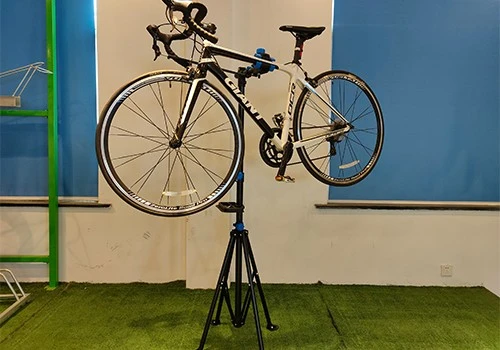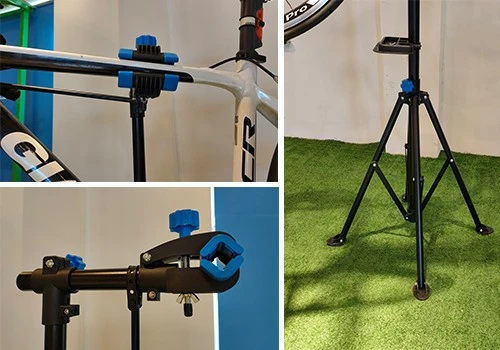Specifications
Model Number : PV-SC-001
Type: Bike parking and storage
Color:Yellow,Black,Green,Red,or Customized.
Style : both indoors and outside
Material : carbon steel
Loading: According to customer need
Size :195*23.2*75cm,200.55*23.2*75cm,or Customized.
Finish: hot-galvanized
Specifications
Model Number : PV-0081-01
Type: Bike parking and storage
Color:silver
Style : both indoors and outside
Material : carbon steel
Loading: According to customer need
Size :Height 1463mm, Depth 1114mm
Finish: hot-galvanized
Model Number : PV-0081-01
Type: Bike parking and storage
Color:Black
Style : both indoors and outside
Material : carbon steel
Loading: 2-10 bikes (According to customer need)
Size :Height 1463mm, Depth 1114mm
Finish: hot-galvanized
Model No.: PV-H1
Size: w605*D400*H330mm
Specification: Round tube:¢16*1.2mm
Finish: Power coated
Net Weight: 1.6 kgs
Packing size:6pcs/ctn
MOQ: 100pcs
Model Number : PV-0024-01
Material : carbon steel/stainless steel
Loading: according customer space size,we can design according the size
Size : W1977*D1130(depend on your parking space)*H2500mm
Finish: Powder coated ,hot-galvanized/electric polish
Packing size :2000*2000*2500mm(40 parking space )
Powder coated ,hot-galvanized/electric polish
Product number:PV-0046-01
Material:carbon steel
Specification:10.2*59*28CM or Customized.
MOQ:100PCS
Port:Shanghai
Trademark:PV
Model Number : PV-0081-01
Type: Outdoor Bike Parking Rack
Style : both indoors and outside
Material : carbon steel
Loading: 2-10 bikes (According to customer need)
Size :170.5*116*148CM
Finish: hot-galvanized
Model Number : PV-0055-01
Type: compact flat pack /slot
Color:black / silver /yellow/optional
Style :Outdoor/indoor
Material : carbon steel/ stainless steel
Capacity : park 6 bikes
Size : L1400*W1054*H840mm
Net weight :38KG
Finish: powder coating / hot galvanized /elctropolishing
Packing size :1490*860*160mm 1pcs/ctn
Product Name: Multi-Capacity Horizontal Two Tier Bike Parking Rack
Material: Carbon Steel
Finish: Powder coated
Post: 80mm * 80mm thickness: 3mm
Steel plate: thickness: 2mm
Dimension: 1325*1890*1830mm
Weight: 370 kg/set
Model: PV-0067-01
Material: stainless steel 304
Pipe: 50 mm* 2.5 mm
Size: 900*700 mm(L*W)
Surface treatment: polishing

As cities around the world embrace sustainable transportation, bicycle usage has surged dramatically. From commuters navigating urban streets to recreational riders exploring scenic paths, more people than ever rely on bicycles for mobility. Behind this bicycle revolution stands an often-overlooked infrastructure component: the humble bicycle rack. These essential fixtures provide secure parking for millions of bikes daily, yet their maintenance frequently takes a backseat to more visible transportation projects.
For bicycle rack manufacturers, emphasizing proper maintenance isn't just about extending product lifespan—it's about protecting brand reputation, ensuring user safety, and promoting cycling as a viable transportation option. This comprehensive guide explores why bicycle rack maintenance matters and how both users and municipalities can establish effective care routines.
The most compelling reason for maintaining bicycle racks is preventing accidents and injuries. A poorly maintained rack can transform from a convenience into a hazard in several ways:
Loose bolts and unstable anchor points create wobbling structures that can collapse under the weight of multiple bikes. This not only damages the bicycles but also poses risks to anyone nearby. Rusted or corroded metal components can develop sharp edges that slice skin or damage bike tires and frames. In extreme cases, structural failures have resulted in bikes falling into traffic or onto pedestrians.
Regular inspections should check for these common safety issues:
For manufacturers, designing racks with maintenance in mind—using corrosion-resistant materials, accessible fasteners, and durable finishes—creates products that remain safe throughout their intended lifespan. Documentation provided with each rack should include specific safety inspection checklists tailored to that model.
Bicycle racks represent a significant investment for municipalities, businesses, educational institutions, and other organizations. Proper maintenance directly impacts the return on that investment by extending service life.
Without regular care, even high-quality racks can deteriorate prematurely. In coastal areas, salt air accelerates corrosion of metal components. Urban environments expose racks to pollutants, graffiti, and frequent use that takes a toll. Outdoor racks face constant exposure to rain, snow, and temperature fluctuations that cause materials to expand and contract.
A proactive maintenance program can extend a rack's functional life by 50% or more. This translates to substantial cost savings over time, as replacement cycles are extended. For example, a rack that would normally need replacement after 5 years might last 7-8 years with proper care—reducing long-term infrastructure costs by 30-40%.
Key preservation practices include:
Manufacturers can support these efforts by providing recommended maintenance schedules, identifying compatible cleaning products, and offering replacement parts that make repairs economical.

A bicycle rack that looks intact but fails to function properly is effectively useless. Maintenance ensures that racks remain accessible and functional for all users, including those with specialized bikes or mobility needs.
Common functionality issues that develop without maintenance include:
Functional racks accommodate various bicycle types, from standard commuter bikes to cargo bikes, electric bikes, and children's bikes. Maintenance should verify that all design features continue to work as intended—whether that's adjustable arms, locking points, or specific spacing between elements.
For businesses and institutions, functional bicycle racks contribute to overall accessibility. They send a message that cyclists are valued patrons or members of the community. Conversely, neglected racks that don't properly secure bikes discourage cycling and may drive customers or visitors to choose other transportation methods.
Bicycle racks contribute to the visual landscape of public spaces. Well-maintained racks enhance their surroundings, while neglected ones become eyesores that detract from community aesthetics.
Rust, graffiti, and damage create negative impressions that extend beyond the rack itself. They signal neglect and can contribute to the "broken windows" effect, where visible signs of disrepair encourage further deterioration and antisocial behavior.
Maintaining the visual appeal of bicycle racks involves:
Many modern bicycle racks feature innovative designs that serve as public art while providing functionality. These statement pieces require careful maintenance to preserve their artistic integrity and continue making positive contributions to urban aesthetics.
Manufacturers can support aesthetic maintenance by offering touch-up kits in matching colors, providing graffiti removal guidelines that won't damage finishes, and using materials selected for both durability and visual appeal.
Bicycle racks play a critical role in supporting broader sustainability objectives. Cities and organizations worldwide are promoting cycling as a way to reduce traffic congestion, lower carbon emissions, and improve public health. None of these goals can be achieved without adequate, well-maintained bicycle parking.
When racks are damaged, dirty, or non-functional, they create barriers to cycling. Commuters who worry about bike security or damage from poor rack conditions will likely choose motorized transportation instead. This directly undermines sustainability initiatives and the significant investments made in bike lanes and other cycling infrastructure.
Well-maintained bicycle racks:
For manufacturers committed to sustainability, emphasizing maintenance aligns with corporate values by ensuring their products continue to support eco-friendly transportation long after installation. This commitment can be demonstrated through green manufacturing practices, recyclable materials, and maintenance guidelines that minimize environmental impact.
Effective bicycle rack maintenance requires a structured approach tailored to the specific type of rack, its location, and typical usage patterns. While manufacturers should provide model-specific guidelines, these general best practices apply to most common bicycle rack types:
Bicycle rack manufacturers play a crucial role in establishing effective maintenance practices. By designing with maintenance in mind and providing comprehensive support, manufacturers can ensure their products deliver maximum value throughout their lifespan.
Key manufacturer responsibilities include:
Bicycle racks are the unsung heroes of sustainable transportation infrastructure. They quietly support daily commutes, recreational rides, and the broader shift toward eco-friendly mobility. Yet their effectiveness depends entirely on proper maintenance—a factor often overlooked in transportation planning and budget allocations.
For bicycle rack manufacturers, advocating for and supporting maintenance isn't just good customer service; it's essential to product success. Well-maintained racks perform better, last longer, and create positive experiences that encourage repeat purchases and brand loyalty. They demonstrate a commitment to quality that extends beyond the initial sale.
As cycling continues to grow in popularity, the importance of bicycle rack maintenance will only increase. It's time to recognize these essential structures as long-term investments worthy of regular care and attention. By prioritizing maintenance, we ensure that bicycle racks continue to serve communities effectively, safely, and attractively for years to come—supporting healthier, more sustainable cities for everyone.